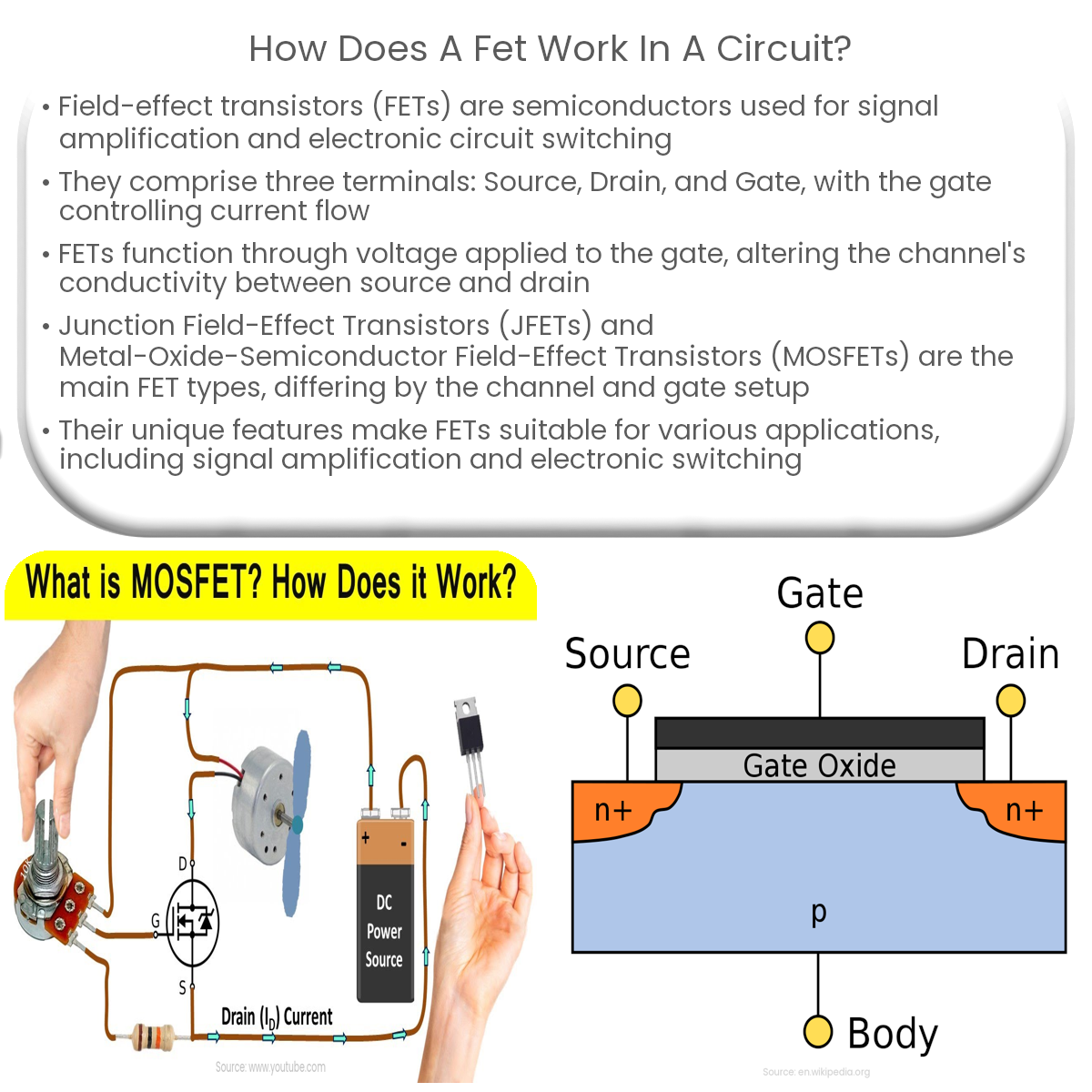A FET works in a circuit by using the voltage applied to its gate terminal to control the current flow between the source and drain terminals.
Understanding Field-Effect Transistors (FETs)
A field-effect transistor (FET) is a semiconductor device used for amplifying signals or switching electronic circuits. FETs operate by utilizing an electric field to control the flow of current between the source and drain terminals. In this article, we will discuss how FETs work in a circuit.
Basic Structure of a FET
There are two main types of FETs: Junction Field-Effect Transistors (JFETs) and Metal-Oxide-Semiconductor Field-Effect Transistors (MOSFETs). Despite their differences, both types share a common structure consisting of three terminals:
- Source (S): The terminal through which the current enters the FET.
- Drain (D): The terminal where the current exits the FET.
- Gate (G): The terminal responsible for controlling the current flow between the source and drain.
The FET’s operation relies on a thin semiconductor channel connecting the source and drain, with the gate controlling the flow of current through this channel.
How FETs Work in a Circuit
FETs use the voltage applied to the gate terminal to control the current flow between the source and drain terminals. A change in gate voltage can either increase or decrease the channel’s conductivity, which in turn controls the current flow.
In a JFET, the channel is doped to be either N-type or P-type, and a PN junction is formed at the gate terminal. By applying a reverse bias voltage to the gate, the depletion region around the PN junction expands, narrowing the channel and reducing the current flow.
In a MOSFET, the gate terminal is insulated from the channel by a thin oxide layer. When a voltage is applied to the gate, an electric field is created, which either attracts or repels charge carriers in the channel. As a result, the channel’s conductivity increases or decreases, controlling the current flow between the source and drain terminals.
FETs in Amplification and Switching Applications
Due to their high input impedance and low output impedance, FETs are commonly used in amplification applications. They can be used as voltage amplifiers or current amplifiers, depending on the circuit configuration.
In switching applications, FETs are used to control the flow of current in a circuit. By applying a voltage to the gate terminal, the FET can either allow or block current flow between the source and drain terminals, effectively functioning as an electronic switch.
In summary, FETs are versatile semiconductor devices that utilize an electric field to control the flow of current in a circuit. Their unique properties make them suitable for various applications, including signal amplification and electronic switching.


